Renewable Energy in Australia: Stats & Figures
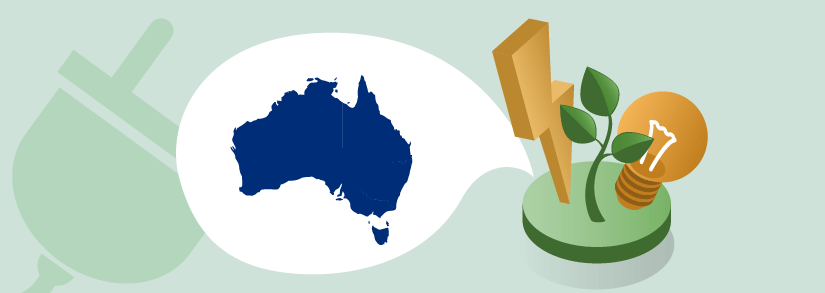
In 2025, for the first time in Australian history, renewable energy accounted for 39.4% of the total energy generated in Australia. This is thanks to state governments' push to usher in renewable energy across the country and help reach Australia's Renewable Energy Target.
What is Renewable Energy?
Renewable energy is energy that is naturally occurring and is constantly replenished on a sustainable timescale. There are many natural sources of renewable energy as well as green energy technologies used to harness the Earth's energy.
Unlike fossil fuel or coal which take millions of years to be created, renewable resources are constantly replenished on a timescale that is sustainable for continued human use.
Naturally occurring renewable energy includes energy from the sun & the earth's internal heat as well as kinetic energy from wind, and water. Certain biomasses, such as rapidly replenishing plants like bamboo, or gas from decaying organisms can also be sources of renewable energy if burned.
Are Green Energy & Renewable Energy the Same?
Green energy, renewable energy and clean energy are not exactly the same, however, they have a lot in common.
RENEWABLE ENERGY: Renewable energy is energy that is constantly being renewed on an efficient human timescale, meaning that we can reuse the same form of energy within the span of a human lifetime as it is replenished.
GREEN ENERGY: Green energy is energy that is derived from natural resources and has less harmful environmental impact than traditional forms of energy. Therefore, most green energy is also renewable energy as it often comes from renewable resources such as wind, water, solar, etc.
CLEAN ENERGY: Clean energy is energy that does not pollute the air. Some forms of clean energy are also very harmful to the environment and are not considered renewable energy. Nuclear energy is a great example of this because it is not a renewable or green energy source, but it is a clean energy source.
Not all renewable energy is green energy!Forests are often cleared and rivers are dammed to make room for hydroelectric power plants. While this practice creates falling water which produces renewable energy, hydroelectric energy is not very green as it harms the environment.
Renewable Energy Sources
The main sources of renewable energy are:
- Wind
- Solar
- Hydropower
- Geothermal
- Biomass
Wind energy is the most used and widespread of the renewable energy sources listed above.
Solar energy is the most well-known source of renewable energy listed above, and hydropower is one of the oldest renewable energy sources listed above.
Geothermal energy and biomass are both valid forms of renewable energy but have had less notoriety than solar, hydro and wind.
Click to read more about the different types of renewable energy sources in Australia below:
Wind Energy
Wind energy has always reigned supreme in Australia and is the most widely used renewable energy source in the country.
As of 2024, wind energy accounted for over 35% of the clean energy that is generated in Australia and nearly 10% of the total electricity generated in Australia.
Wind energy works by capturing the kinetic (moving) force of the wind with large wind turbines. The wind spins the turbine which uses the spinning process to transform the wind's kinetic energy into electrical energy to be used as electricity on the power grid.
There are some drawbacks to using wind energy, as some of the most profitable areas for wind farms are quite remote and the noise of the large turbines can disrupt the wildlife in the area.
However, technological advancements are making wind energy cheaper, easier, and less disruptive, and as the cost of green energy technology continues to decrease, wind power is expected to grow in Australia.
Solar Energy
The sun is arguably one of the most abundant and widely available resources on the planet, and Australia is well-suited for solar power. As of the end of 2024, small-scale solar accounted for 23.5% of all renewable energy generated in Australia, behind wind power and narrowly beating out hydro as the #2 renewable energy in the country.
In 2024 alone, 378,451 Australians had solar PV systems installed, which is the highest number since 2012. Today, 1 in 4 Australian households now have solar panels installed on their roofs.
Solar energy works by harnessing sunlight's photons and utilizing a photovoltaic (PV) system to transform that sunlight into energy for our use. Solar energy is quickly becoming the most common source of renewable energy at the small-scale and residential level thanks to technological advances that have made solar panels cheaper.
As the cost of solar PV systems drops, more households and private businesses are able to purchase and install solar panels on their properties. Many energy providers in Australia are also adding incentives for customers to adopt solar panels, such as solar feed-in-tariffs which allow customers to send energy back to the grid.
Looking for a Solar Quote or the cheapest Solar Panel Installation?
Click now or call our providers to find the cheapest deal for your needs!
A solar feed-in tariff (FiT) is an energy buy-back scheme where households with solar panels and a solar battery can send unused energy back into the grid for extra money. The amount of money you can make from a solar Feed-in tariff can vary widely depending on where you live, who your energy provider is, and which electricity plan you’re on.
What can solar energy be used for? Solar energy has a number of different residential uses. In addition to the classic rooftop solar panels, you frequently see on Australian homes, solar thermal energy can be used to heat water for home use and to heat pools.
Hydropower & Hydroelectricity
Hydropower is the 3rd biggest source of renewable energy in Australia. Australia has over 120 hydroelectric power stations, which contribute 23.3% of all renewable energy generation in the National Electricity Market.
Before 2024, hydropower was the second-biggest source of renewable energy in Australia. However, thanks to the increased uptake of small-scale solar PV systems and an overall increase in capacity, solar power has surpassed hydropower which is now the 3rd biggest source of renewable energy in Australia.
Hydropower, which is energy generated from the movement of water, is another popular renewable energy resource. The use of water to generate energy has been around for a long time, with people harnessing its power for boats, grain mills, and even mining. Hydropower is also one of the largest contributors to renewable energy worldwide, contributing to over 16% of the world’s energy production and over half of all renewable energy produced globally.
Unlike solar, hydropower is often done on a larger scale as it requires the use of vast turbines and generators and the movement of large amounts of water. That’s not to say residential and small-scale hydro isn’t a possibility, just that you need a continuous supply of swiftly moving water in order to generate enough energy to offset the cost of the system and it can be hard to find a fast-enough, large-enough, body of moving water on smaller private property.
Snowy Hydro powerplant, the parent company of Red Energy and Lumo Energy, owns Australia's largest hydroelectric station and contributes to over half of all hydropower within Australia. Currently, there are plans to expand Snowy Hydro, with a plan called Snowy 2.0 in an effort to decrease Australia’s dependence on non-renewable energy sources while implementing renewable energy storage and kWh output.
Geothermal Energy
Geothermal energy takes heat from the Earth, in the form of steam or water, which is transformed into electricity.
According to the Australian Renewable Energy Agency, while Australia has immense geothermal energy potential it is not the most financially viable renewable energy option due to the significant start-up costs for the geothermal system technology needed, as well as the difficulty in identifying and then extracting the geothermal reservoirs.
As such, Geothermal energy accounts for around 0.001% of Australia's total clean energy consumption.
Bioenergy & Biomass
As of 2024, biomass energy accounted for 1.4% of total energy production and 5% of renewable energy production in Australia.
Bioenergy utilizes living or once-living organisms to create electricity by burning the biomass to create hot gas.
These organisms can be anything, but wood waste, black liquor (a by-product from paper manufacturing), biogas from landfill or sewage methane, energy crops, commercial crop residue, or household garbage or garden pruning, which are the most common. This hot gas is then generated into steam through a boiler, which is run through a steam engine or turbine to create mechanical or electrical energy.
Need Energy Advice ?
Selectra's Energy Experts are Available To Help You Free of Charge
(Free Selectra Service - Currently open)
Renewable Energy in Australia
Australia is well-positioned for the global transition to clean, green, and renewable energy thanks to its ample sunshine, large bodies of moving water, and strong winds.
Australia ranks seventh globally for installed renewable energy capacity. In 2024, Australia had a total installed renewable energy capacity of over 17,600.000 MW.
In the table below you can see where Australia ranks globally for its renewable energy capacity:
| Ranking | Country | Total installed capacity in MegaWatts |
|---|---|---|
| 1st | China | 254,354.800 MW |
| 2nd | USA | 75,571.700 MW |
| 3rd | Japan | 66,999.949 MW |
| 4th | Germany | 53,783.000 MW |
| 5th | India | 39,211.158 MW |
| 6th | Italy | 21,600.345 MW |
| 7th | Australia | 17,627.000 MW |
| 8th | Vietnam | 16,504.490 MW |
| 9th | South Korea | 14,574.791 MW |
| 10th | Spain | 14,089.018 MW |
Source: International Renewable Energy Agency 2024 Country Ratings
As mentioned before, 27.7% of all the energy generated last year in Australia was renewable energy. In the graph below you can find a breakdown of the energy distribution based on the type of resource that created the renewable energy.
Source: Clean Energy Council 2024 Report
Renewable Energy by State
Despite Australia's strong standing globally for renewable energy capacity, wide-sweeping federal renewable energy policy is still lacking across Australia, and in 2025 states and territories took it upon themselves to implement plans to speed up the transition to renewable energy in Australia.
Tasmania is the renewable energy leader in Australia.
As of 2024, Tasmania produces more energy than it uses with green energy technologies reaching a massive 99.2% of the state. The Tasmanian government has also set a goal of reaching 100% renewable energy by 2040.
South Australia has the goal of reaching 100% renewable energy by 2030 and has made significant strides with clean energy accounting for slightly over 60% of total electricity generation in 2020.
And lastly, New South Wales recently implemented sweeping changes with its Electricity Infrastructure Roadmap, which is the state's plan to create 12 GW of renewable energy transmission capacity and bring itself to the center stage of Australia's renewable energy transition by attracting $32 billion in new private investment.
In the table below you can see how the rest of the states are doing:
| State | Renewable Energy Generated (Gwh) | Penetration of Renewable Energy |
|---|---|---|
| NSW | 14312 | 21% |
| QLD | 10888 | 16.6% |
| VIC | 13685 | 27.7% |
| SA | 8523 | 59.7% |
| WA | 4643 | 24.2% |
| TAS | 10866 | 99.2% |
What is The Renewable Energy Target?
The Renewable Energy Target is a goal set by the Australian government to increase the amount of electricity generated from renewable sources in the country. The Renewable Energy Target is divided into two schemes: Large-scale Renewable Energy Target and Small-scale Renewable Energy Scheme.
The Renewable Energy Target is under the responsibility of the Australian Department of Industry, Science, Energy, and Resources who provide policy advice and implementation support for the scheme, while the Australian Energy Regulator (AER) oversees the operation of the Renewable Energy Target scheme, in accordance with the legislation.
The Renewable Energy Target was first implemented in 2001, as the Mandatory Renewable Energy Target of 9,500 GWh of renewable generation by 2024. This was then expanded in 2009 from the original 9,500 GWh to 45,000GWh by 2020 with an expansion of the legislation until 2030 when it was agreed to be phased out.
In 2011, the Renewable Energy Target was split into what is now the Large-scale Renewable Energy Target and Small-scale Renewable Energy Scheme, with a goal of 41,000GWh generated renewable energy from large-scale generation and an uncapped small-scale generation goal.
In 2015 the LRET was reduced to 33,000GWh by 2024. The Large-scale Renewable Energy Target of 33,GWh was achieved in September 2023.
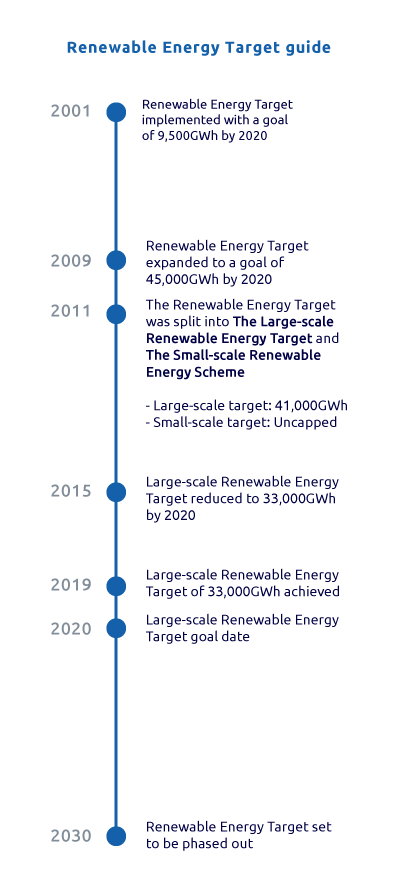
Large-scale Renewable Energy Target (LRET)
The Large-Scale Renewable Energy Target is one half of the Renewable Energy Target set by the Australian government, implemented to encourage more electricity generation through renewable resources, by incentivizing investment into renewable energy power stations.
The LRET incentivizes investment in renewable energy generation through the legislation and creation of large-scale generation certificates (LGCs) for each megawatt hour of renewable electricity produced.
These LGCs ae sold to entities such as electricity retailers, who then buy and surrender them to the Clean Energy Regulator in order to show their compliance with the Renewable Energy Target scheme. These LGCs, in turn, provide the power station with an additional source of revenue.
Small-scale Renewable Energy Scheme (SRES)
The Small-scale Renewable Energy Scheme is the other half of the Renewable Energy Target, which aims to incentivize households, businesses, and communities to install small-scale renewable energy systems.
The Small-scale Renewable Energy Scheme legislates demand for small-scale technology certificates (STCs) which are created, bought, and sold to lower the cost of a small-scale system for the individual or business who purchased it.
What are small-scale renewable energy systems?
Small-scale renewable energy systems are systems too small to be considered a power station, according to the Renewable Energy Target legislation. In terms of residential energy generation, you probably won’t need to worry about whether your system qualifies as large or small scale.
Small-scale renewable energy systems include:
- Rooftop solar PV (the most common)
- Solar water heaters
- Wind turbines
- Air source heat pumps
- Small-scale hydro systems
- solar pool heaters
Small-Scale Certificate (STCs) Price
Small-scale certificates (STCs) are a financial incentive used to promote the use of small-scale and residential renewable energy. STCs are created per system installed, and the amount of STCs you can get depends on a number of factors including geographical location, installation date, and amount of energy it can produce over a period of time, but in general one certificate is approximately equal to one megawatt hour.
With residential renewable systems, STCs are often assigned to the installer or company that provides your renewable energy system, in exchange for a point-of-sale discount. However, it is possible to create and sell them yourself.
STCs can be bought and sold on the open market for an uncapped price, or sold through the STC clearing house (owned by the Clean Energy Council) which currently sets the STC price at a fixed $40.
STC priceDue to the increased number of STCs on the market, the value of these certificates will continue to decrease until they are phased out by 2030. However, as of 2024, the STC price in the open market hovers somewhere around $37 per STC.
If you have a small scale system at your home, you may be able to sell energy back to the grid to help pay for your system. See our article of the solar feed-in tariff for more information.
The Clean Energy Council?
The Clean Energy Council (CEC) is a non-profit organization that encourages the growth of renewable energy in Australia.
The CEC works with leading renewable energy industry actors and CEC members to further clean energy development in Australia and transform the energy market into a smarter and cleaner system.
What Does the Clean Energy Council Do?
The Clean Energy Council is in charge of:
- Advocating for the renewable energy industry & improving clean energy standards
- Providing support to players in the clean energy industry to help the sector grow
- Providing information on clean energy for businesses and the general population
- Working closely with the government to increase demand for clean energy products
- Developing and promoting clean energy policy to meet the Renewable Energy Target
- Advocating for Clean Energy Council members
The Clean Energy Council is also known for their annual Clean Energy Report, which shows the development of clean and renewable energy in Australia at both a national and state level.
CEC Approved Solar ProductsThe Clean Energy Council has separate lists for approved products such as battery systems, solar PV modules (panels), and inverters, to help you build your complete residential solar PV system and make the most of the small-scale technology certificates scheme. Once installed, you could gain access to solar feed-in tariffs as well.
Looking for a Solar Quote or the cheapest Solar Panel Installation?
Click now or call our providers to find the cheapest deal for your needs!
List of CEC Approved Inverters, Panels, Retailers & Installers
The Clean Energy Council is in charge of the following:
- Accrediting solar installers across the country
- Running Australia's Approved Solar Retailer program
- Developing and maintaining lists of approved solar and battery storage products
- Working to develop Australian clean energy baseline standards
As such, the Clean Energy Council has a vast list of approved retailers and CEC accredited installers to help the general public with reputable solar installations.
If you’re considering investing in small-scale solar energy, such as home solar panels, a solar water heater or solar pool heating, you’ll only be able to access government solar rebates if you use products and installers from the CEC approved solar lists below.
The Clean Energy Council maintains lists of:
CEC Approved Retailer Program
The Clean Energy Council Approved Solar Retailer Program allows solar and storage businesses to show they are committed to responsible sales and marketing activities, and maintaining industry best practices.
If you’re considering solar, choosing an approved solar retailer means you’ve chosen a retailer who signed the CEC Solar Retailer Code of Conduct and only uses CEC accredited designers and installers.
How to Become an Approved Solar Retailer
- Here is how to become a CEC approved retailer:
- Prove you've operated in the solar industry for over 12 months
- Prove you adhere to the Approved Solar Retailer Code of Conduct
- Undergo an integrity assessment (includes checking financial integrity)
- Disclose any past or present sanctions from state consumer affairs agencies or the ACCC
- Supply examples of customer documentation
- Meet all the requirements on the application form.
You can apply here to become an approved solar installer with the Clean Energy Council.
If your application is rejected, you can reapply after 1 month of being rejected.
CEC Accredited Installers
While choosing a Clean Energy Council Approved Solar Retailer is important, it’s equally as important to choose a CEC accredited installer for solar and battery storage.
A CEC accreditation signifies that your installer has undergone the necessary training in solar and battery installation and design and follows renewable energy industry best practices. This accreditation is necessary to ensure safe and reliable solar/battery storage systems.
Not to mention, you must use an accredited installer to be able to access government grants for solar rebates.
How to Get Accredited by the Clean Energy Council
As consumers must use an accredited installer to receive government solar rebates, becoming accredited can bring you extra business as a solar installer.
However, you must go through a series of tests and applications to become a CEC accredited installer.
- Here are the steps to get accredited by the Clean Energy Council:
- Complete training through an RTO (Registered Training Organization)
- Apply for a provisional CEC accreditation
- Complete online assessments within 30 days
- Complete a practical assessment of a real installation
- Submit full accreditation application
- Receive full CEC accreditation
Once you have received full CEC accreditation, you must remember to renew your accreditation each year (as it only lasts one year).
Once you have been fully accredited, you can also apply to design and install other types of systems and add additional CEC accreditations to your list of skills.
Clean Energy Council Members & Membership
CEC members are generally companies and players in the renewable energy industry looking to support and advocate for the clean energy sector.
Currently, the Clean Energy Council has over 800 members, who have the opportunity to advise and contribute to the Clean Energy Council through special committees.
Benefits of Clean Energy Council members include:
- Receiving the latest industry information
- Engaging in networking opportunities
- Boosting exposure within the clean energy industry
- Being involved and supporting the policy and advocacy of the CEC.
It's important to note that Clean Energy Council members are not the same as CEC Approved Solar Retailers or CEC accredited installers.
How to Become a Clean Energy Council Member
Becoming a member of the Clean Energy Council costs money, but is a very simple process.
- Here is how to apply for Clean Energy Council Membership
- Agree to follow the Member Code of Conduct and the membership terms & conditions
- Submit a membership application
- You will receive an invoice if you are approved
- Pay the Clean Energy Council members fee within 60 days
You can apply for Clean Energy Council membership here.
If you need help submitting your membership application or have a question you can call the CEC at +61 3 9929 4140
Otherwise you can send an email to: [email protected].
The CEC also played an integral role in developing the Green Power system. Green Power is a government-led initiative between the Australian government and businesses whereby consumers can choose to invest in Green Power plans and force Australian energy providers to use more renewable energy.
Contact the Clean Energy Council
Consumers interested in solar and battery storage can usually find all the information they need on the Clean Energy Council’s website.
However, if you need to contact the Clean Energy Council you can do so using their online contact form. In addition, the CEC has different phone numbers available for CEC members, retailers, and other industry actors who want to get in touch with the CEC.
| Team | Phone Number |
|---|---|
| Head office (general enquiries) | +61 9929 4100 |
| CEC Approved Solar Retailers (questions about becoming an Approved Solar Retailer, or for existing members) | +61 9929 4195 |
| CEC Accredited Installers | +61 3 9929 4141 |
| Current or prospective CEC members | +61 3 9929 4140 |
Clean Energy Council Complaints Process
If you’ve had a negative experience with a CEC accredited installer or CEC approved solar retailer, you can submit a complaint directly with the Clean Energy Council via their online complaints form.
The CEC can only investigate complaints against its accredited installers and approved solar retailers.
You can submit a complaint against a CEC accredited installer if:
- The system is faulty or installed with poor workmanship
- The installation uses panels or inverters that do not meet Australian Standards
In addition, the Clean Energy Council can only investigate complaints on systems installed within the past five years.
When submitting a complaint to the CEC, you will need to provide as many details as possible including your personal and contact details, information about the installer or retailer you have a complaint against, and as much evidence as possible to show your complaint is valid.
Report a product fault with the CECYou can also choose to report a faulty product, if applicable. If possible, include as much information about the system or product as possible including brand and model number. If you have any photos of the product, label, or serial number, you can email them to [email protected]
Green Power
Green Power is a voluntary government initiative to help contribute to help Australia transition to renewable energy.
When you choose a Green Power plan through an accredited green power generator, your electricity provider must purchase a specified amount of electricity through renewable sources to offset your electricity use.
For example, if you decide to opt into a 50% Green Power plan and pay your electricity bill, your electricity provider will 50% of the cost to buy renewable energy in the future.
Green Power helps renewable energy generation in Australia by:
- Offsetting your energy use with climate friendly initiatives.
- Directly invests in more renewable energy generation.
- Focuses on green initiatives in Australia.
Green Power renewable energy sources include:
- Wind from wind turbines.
- Solar energy from PV solar panels.
- Hydro power from either mini hydro or larger hydro electric dams.
- Biomass & Biogas, energy created from the burning of dense plant material, and collection of methane from the waste of landfills.
Green Power is part of a larger goal of reaching Australia’s renewable energy target.
Looking for a Solar Quote or the cheapest Solar Panel Installation?
Click now or call our providers to find the cheapest deal for your needs!
Green Power & Climate Active
Green Power has Climate Active certification, meaning any purchases of a Green Power plan is considered a net zero emission source.
Climate Active (formerly known as the National Carbon Offset Standard) is a partnership between the Australian government and businesses to drive climate action.
Businesses have climate active certification when they reach net zero emissions. Climate active businesses also act as an example to others by setting standards and guidelines for achieving carbon neutrality.
Green Power Costs
Green Power is on average 5 to 10 cents more expensive than standard electricity. This fee varies depending on whether you opt for a lower percentage Green Power plan, like 20%, or a higher plan, 100%.
Best way to calculate your individual Green Power costs would be to add 5-10 cents per kWh on top of your current usage rate.
There are also fixed fee Green Power plans, where a 10-20% usage plan will cost on average one or two dollars a week. For a 100% usage plan, weekly fees can get as high as eight dollars a week.
Still want to support renewable energy but can’t afford to drastically increase your monthly bills? Here are a few options you can take to lower your expenses while still supporting renewable energy:
- If Green Power is out of reach of your wallet at the moment, consider an electricity retailer that still supports clean renewable energy. Companies like OVO Energy or Enova Energy all offer competitive plans that support renewable energy.
- Many energy providers have flexible Green Power options, allowing you to contribute according to your individual needs. If you are tight on money, but still want to support renewable energy, you’ll be able to set a rate right for you.
- Try to use less power throughout the day. Using less power is always good for the environment and for your wallet.
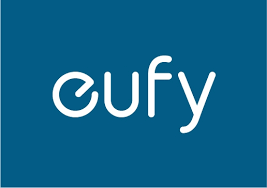
Eufy smart lights let you set the right mood or boost security with app and voice controls, color choices, and easy schedules. They’re designed for indoors and out, and work smoothly with security cams and other smart tech—like video doorbells, vacuums, and home sensors—for a full, easy-to-set-up home system.
To sign up for a Green Power plan you can call your energy provider and ask for a Green Power plan of your choosing gets added to your tariff. If that option is not available you are able to sign up with a provider that offers Green Power plans themselves.
More about Renewable
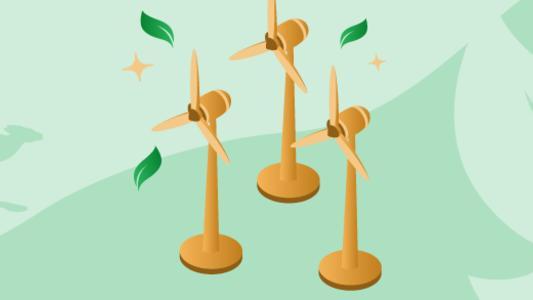
Wind Energy, Wind Turbines, and Wind Power in Australia
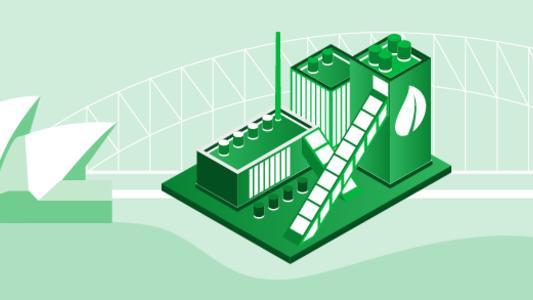
Biomass Energy and Biogas in Australia
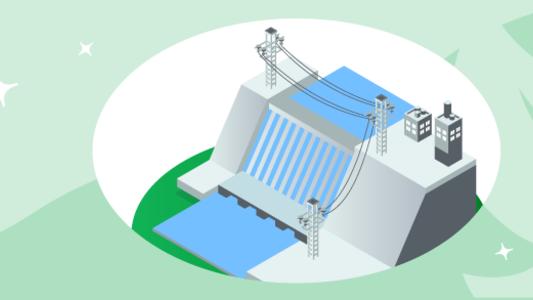
Hydroelectricity & Hydropower in Australia
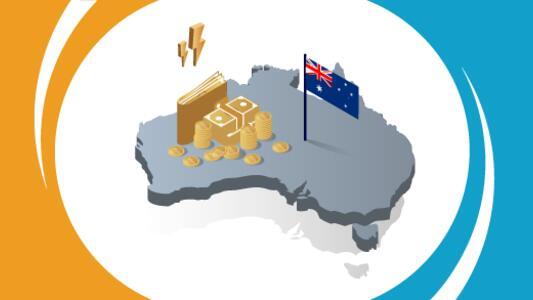
Green Gas: What Is It and Can You Use It at Home?
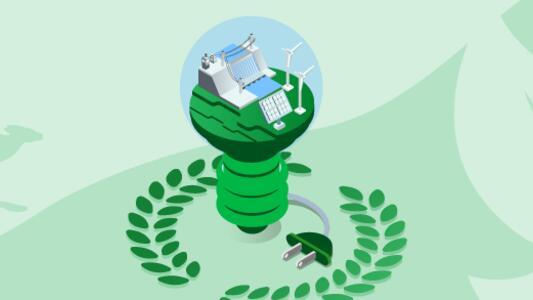
Green Energy: What It Is and Why It Matters

Smart Lighting Systems in Australia

Green Loans for Healthcare Providers: Save on Solar, EVs & Energy
Frequently Asked Questions
What percentage of Australia's electricity comes from renewables in 2025?
In 2025, renewable energy supplied over 43% of the main electricity grid, with solar and wind providing the majority of clean power. This marks a historic high for the country’s energy transition.
What is the difference between renewable, green, and clean energy?
Renewable energy comes from sources naturally replenished on a human timescale, green energy has minimal environmental impact, and clean energy creates no air pollution—some sources, like nuclear, are clean but not renewable.
What are the main renewable energy sources in Australia?
Australia’s top renewable sources are wind, solar, hydropower, geothermal, and biomass—wind and solar produce the majority of clean electricity, with hydropower also significant.
How are renewable energy targets set and monitored in Australia?
The Renewable Energy Target includes a Large-scale and Small-scale scheme, with goals for national renewable electricity by set deadlines. Progress is tracked by government agencies like the Clean Energy Regulator and Clean Energy Council.
What is Green Power in Australia?
Green Power is a voluntary government program allowing households and businesses to pay for electricity sourced from renewables, helping accelerate the national renewable energy transition.
How much does Green Power cost?
Green Power plans typically add 5–10 cents per kWh to your electricity rate. Fixed-fee plans start at a few dollars a week for partial coverage, up to about eight dollars weekly for 100% Green Power.
Click below to find a better deal for your home!
